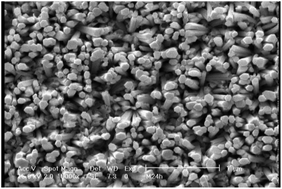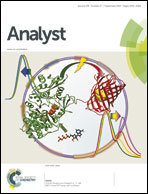Synthesis of ZnO nanorods and their application in the construction of a nanostructure-based electrochemical sensor for determination of levodopa in the presence of carbidopa
Abstract
A novel carbon paste electrode modified with ZnO nanorods and 5-(4′-amino-3′-hydroxy-biphenyl-4-yl)-acrylic acid (3,4′-AAZCPE) was fabricated. The electrochemical study of the modified electrode, as well as its efficiency for the electrocatalytic oxidation of levodopa, is described. The electrode was employed to study the electrocatalytic oxidation of levodopa, using cyclic voltammetry (CV), chronoamperometry (CHA), and square-wave voltammetry (SWV) as diagnostic techniques. It has been found that the oxidation of levodopa at the surface of the modified electrode occurs at a potential of about 370 mV less positive than that of an unmodified carbon paste electrode. The SWV results exhibit a linear dynamic range from 1.0 × 10−7 M to 7.0 × 10−5 M and a detection limit of 3.5 × 10−8 M for levodopa. In addition, this modified electrode was used for the simultaneous determination of levodopa and carbidopa. Finally, the modified electrode was used for the determination of levodopa and carbidopa in some real samples.


 Please wait while we load your content...
Please wait while we load your content...